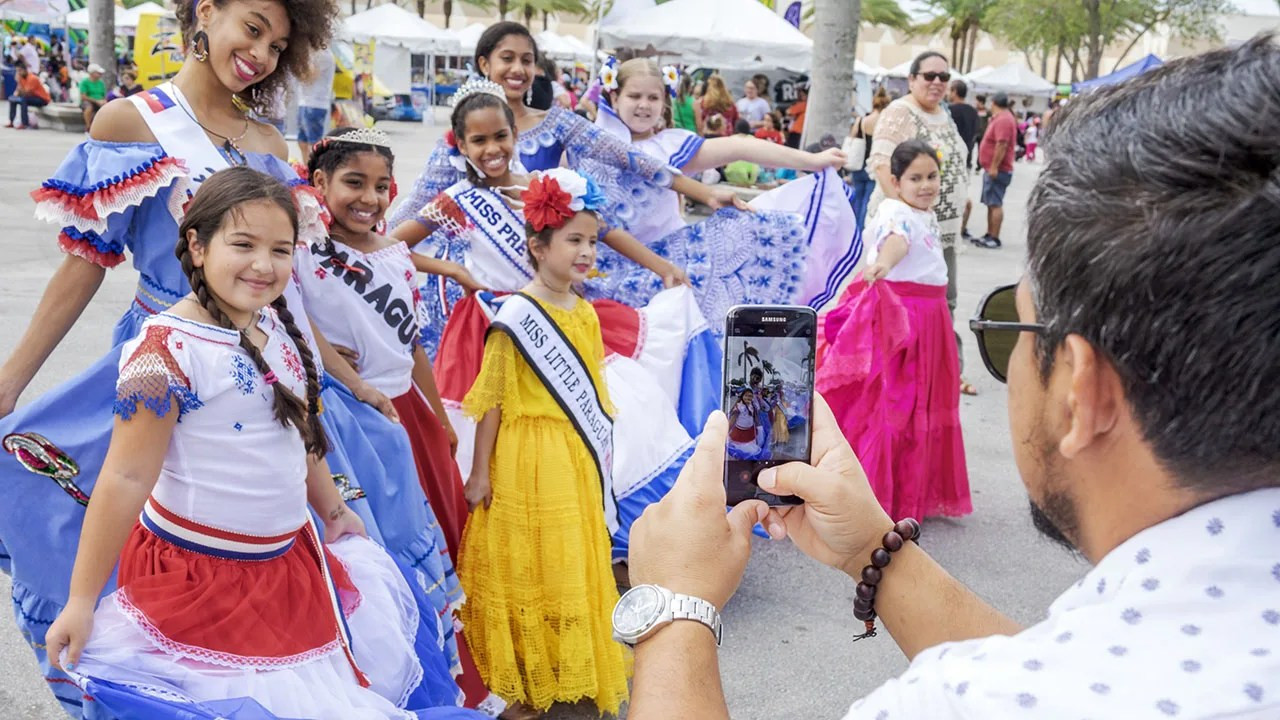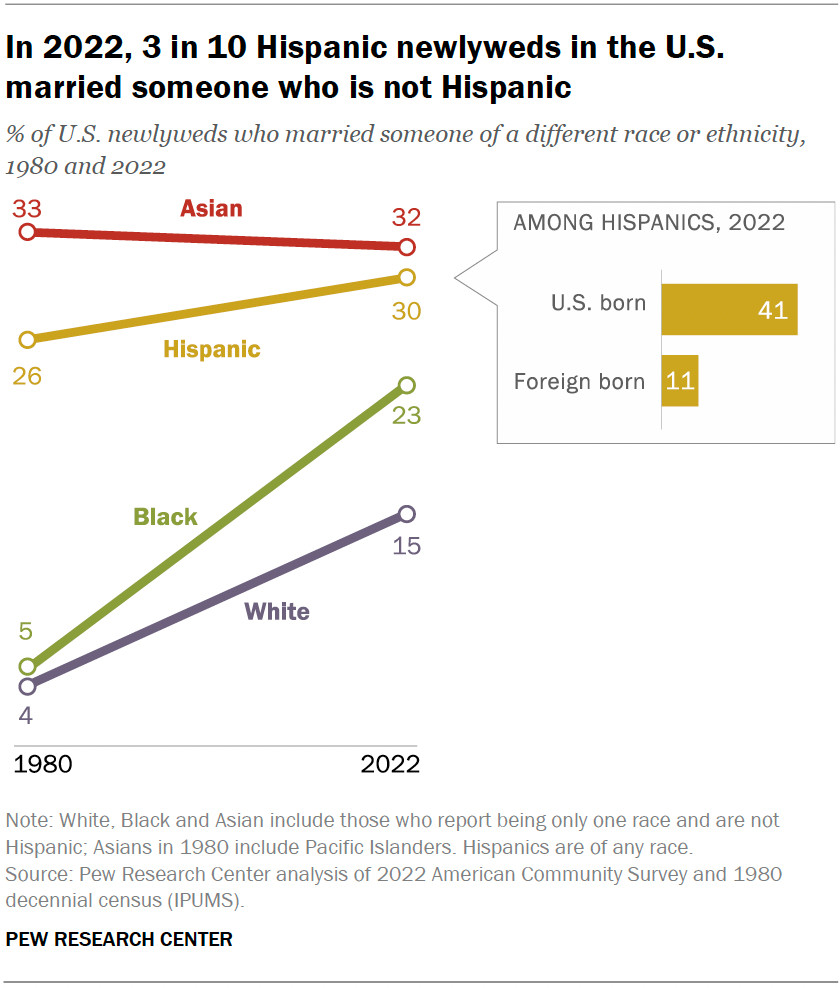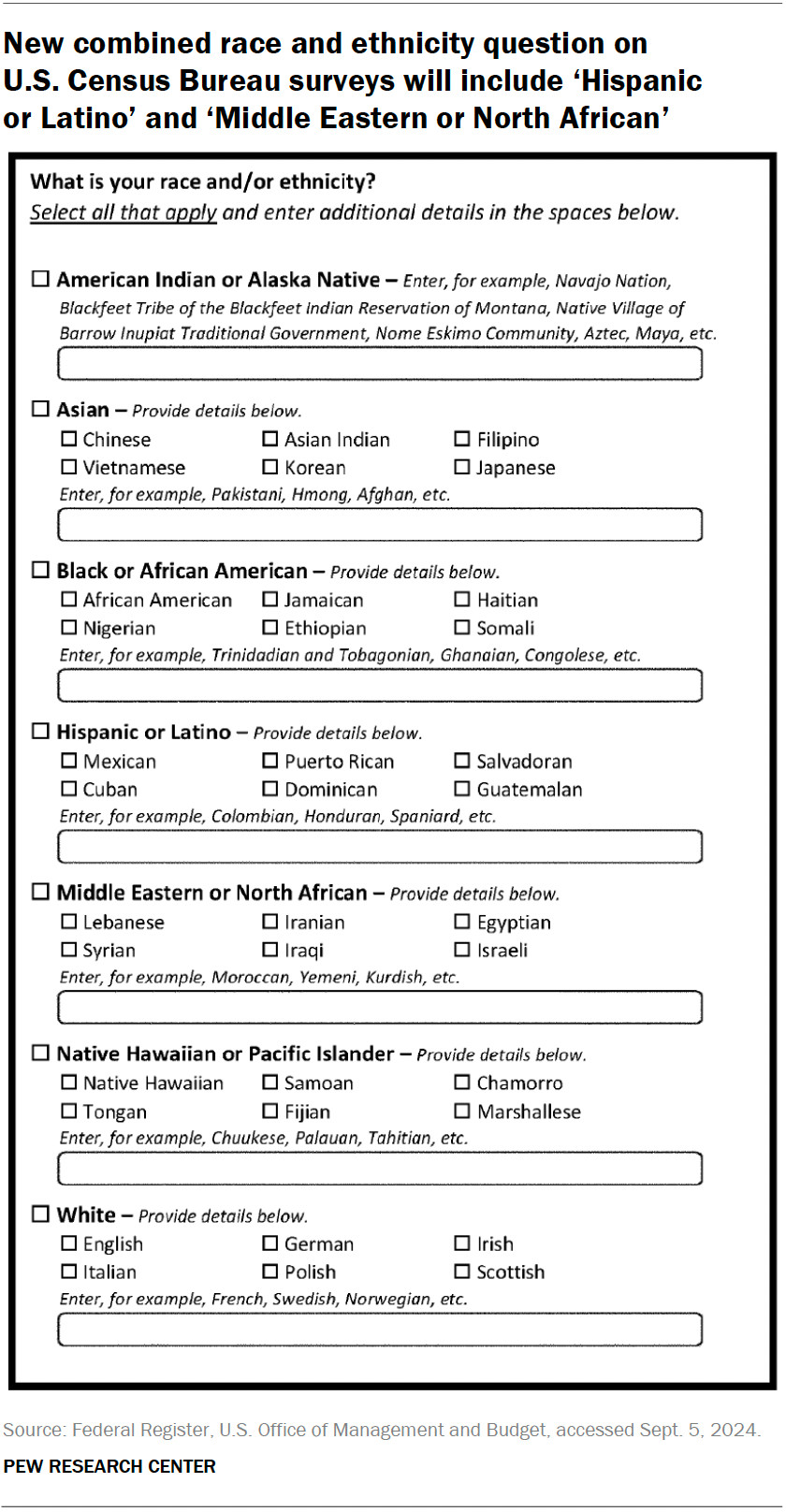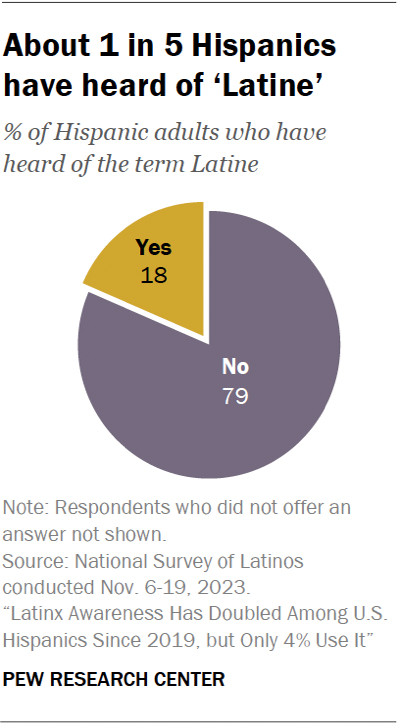Are Mexicans Hispanic? Yes, Mexicans are generally considered Hispanic, particularly within the United States. This is because the term “Hispanic” refers to people, cultures, or languages that originate from Spain and Spanish-speaking countries. Discover more about Hispanic identity, LGBTQ+ travel in Mexico, and connecting with the community at gaymexico.net. For LGBTQ+ individuals exploring their heritage and finding a welcoming space, it’s crucial to understand Mexican-Hispanic heritage and explore resources for the LGBTQ+ community.
1. Defining Hispanic Identity
1.1. What Does “Hispanic” Mean?
The term “Hispanic” refers to people, cultures, and languages that originate from Spain and Spanish-speaking countries. This definition is widely used in the United States to categorize individuals who trace their heritage to these regions. So, Mexicans, with their deep roots in Spanish language and culture due to Mexico’s colonial history, are generally considered Hispanic.
1.2. The Role of Language and Culture
Language plays a crucial role in the definition of “Hispanic.” People from Spanish-speaking countries are typically included in this category. Culture is equally important, as Hispanic culture encompasses a wide range of traditions, customs, and values that are shared among Spanish-speaking communities.
Mexicans share a common language, Spanish, with many other Latin American countries and Spain. Their culture is rich in traditions, including music, dance, cuisine, and celebrations like Día de los Muertos, reflecting a blend of indigenous and Spanish influences. For those interested in exploring this vibrant culture, resources like gaymexico.net provide insights into LGBTQ+ events and cultural experiences in Mexico.
1.3. U.S. Government Definition
The U.S. government officially defines “Hispanic or Latino” as individuals of Mexican, Puerto Rican, Cuban, Dominican, Guatemalan, and other Central or South American or Spanish culture or origin. This definition is used by the Census Bureau and other federal agencies to collect data and analyze demographic trends. It encompasses a broad range of nationalities and cultural backgrounds, all united by their connection to Spanish language and heritage.
1.4. Challenges in Self-Identification
Self-identification is a key factor in determining Hispanic identity. However, challenges arise when individuals do not identify with the term “Hispanic” despite having ancestral ties to Spanish-speaking countries. Generational differences, cultural assimilation, and personal preferences can all influence how people choose to identify themselves.
According to a 2015-2016 Center survey, of the 42.7 million adults with Hispanic ancestry living in the U.S., an estimated 5 million people, or 11%, said they do not identify as Hispanic or Latino. This highlights the complexities of ethnic identity and the importance of respecting individual choices in self-identification.
 Beauty pageant contestants at the Junta Hispana Hispanic cultural festival in Miami.
Beauty pageant contestants at the Junta Hispana Hispanic cultural festival in Miami.
2. The Nuances of “Hispanic” vs. “Latino”
2.1. Understanding the Terms
The terms “Hispanic” and “Latino” are often used interchangeably, but they have distinct meanings. “Hispanic” refers to people, cultures, or languages that originate from Spain and Spanish-speaking countries. “Latino,” on the other hand, refers to people who originate from Latin America, which includes countries where Spanish, Portuguese, and French are spoken.
Therefore, Brazilians, who speak Portuguese, are considered Latino but not Hispanic. Understanding this distinction is essential for accurate communication and cultural sensitivity.
2.2. Origin and Usage
The term “Hispanic” gained prominence in the United States in the 1970s, when the U.S. government began using it for census and data collection purposes. “Latino” emerged as an alternative term, particularly among activists and scholars who wanted to emphasize the shared experiences of Latin American people.
Both terms serve as pan-ethnic labels, aiming to encompass the diverse populations with ties to Spanish-speaking countries and Latin America. However, they are not universally embraced, and many individuals prefer to identify by their specific country of origin, such as “Mexican” or “Colombian.”
2.3. Personal Preferences
Personal preference plays a significant role in how individuals choose to identify. Some people feel a stronger connection to the term “Hispanic” due to its emphasis on Spanish heritage, while others prefer “Latino” for its broader inclusion of Latin American identity. A Pew Research Center study found that 52% of Hispanics prefer to describe themselves as Hispanic, 29% prefer Latino, and 15% have no preference.
It’s important to respect individual preferences and avoid making assumptions about someone’s identity based solely on their appearance or background. Resources like gaymexico.net can help LGBTQ+ individuals in the USA explore and affirm their identities in a supportive environment.
2.4. The Emergence of “Latinx” and “Latine”
“Latinx” and “Latine” are newer pan-ethnic terms that have emerged as gender-neutral alternatives to “Hispanic” and “Latino.” These terms aim to be inclusive of people who do not identify within the traditional gender binary.
“Latinx” has gained some traction in academic, activist, and media circles, but it remains relatively unpopular among the broader Hispanic population. A 2023 survey found that only 4% of U.S. Hispanics use the term “Latinx” to describe themselves.
“Latine” is an even more recent term, with only 18% of U.S. Hispanics having heard of it. Both terms reflect ongoing efforts to create more inclusive language, but their acceptance and usage vary widely.
 An image showing how the U.S. Census Bureau determines who is Hispanic in government surveys.
An image showing how the U.S. Census Bureau determines who is Hispanic in government surveys.
3. Racial Identity Among Hispanics
3.1. Hispanic as an Ethnicity, Not a Race
In the eyes of the U.S. Census Bureau, “Hispanic” is an ethnicity, not a race. This means that Hispanics can be of any race, including White, Black, Asian, or any other race. However, this distinction has been a subject of debate, as many Hispanics feel that their ethnicity is intrinsically linked to their racial identity.
A 2015 Center survey found that 17% of Hispanic adults said being Hispanic is mainly a matter of race, while 29% said it is mainly a matter of ancestry, and 42% said it is mainly a matter of culture. These varying perspectives highlight the complexities of racial and ethnic identity among Hispanics.
3.2. Census Bureau Data on Race and Ethnicity
The Census Bureau collects data on race and ethnicity separately, allowing respondents to identify as both Hispanic and a particular race. In the 2022 American Community Survey (ACS), 22.5 million single-race Hispanics identified only as “some other race.” This group primarily includes those who wrote in a Hispanic origin or nationality as their race.
Another 10.7 million identified as White, while fewer Hispanics identified as American Indian (1.5 million), Black (1.0 million), or Asian (300,000). These numbers illustrate the diverse racial backgrounds within the Hispanic population.
3.3. Multiracial Hispanics
The number of multiracial Hispanics has grown significantly in recent years. In 2022, roughly 27.5 million Hispanics identified as more than one race, up from just 3 million in 2010. This growth is primarily driven by those who identify as White and “some other race.”
The sharp increase in multiracial Hispanics could be due to several factors, including changes to the census form that added more space for written responses to the race question and growing racial diversity among Hispanics.
3.4. The Impact of Skin Color
Skin color can play a significant role in the experiences of Hispanics in the United States. A 2021 Center survey of Latino adults showed that a majority (57%) say skin color shapes their daily life experiences at least somewhat.
Many Hispanics believe that having a lighter skin color helps Latinos get ahead in the U.S. (59%), while having a darker skin color hurts Latinos’ ability to get ahead (62%). These perceptions highlight the persistent issue of colorism within the Hispanic community and broader society.
 A line chart showing that U.S. Hispanic population exceeded 65 million in 2023.
A line chart showing that U.S. Hispanic population exceeded 65 million in 2023.
4. LGBTQ+ Considerations Within the Hispanic Community
4.1. Intersections of Identity
For LGBTQ+ individuals of Mexican or Hispanic descent, identity can be a complex and multifaceted experience. Navigating the intersections of sexual orientation, gender identity, ethnicity, and culture can present unique challenges and opportunities.
Many LGBTQ+ Hispanics find themselves negotiating cultural expectations and norms within their families and communities, while also embracing their identities as LGBTQ+ individuals. This can lead to internal conflicts, but also to a deeper understanding of oneself and one’s place in the world.
4.2. Cultural Acceptance and Challenges
Cultural acceptance of LGBTQ+ individuals varies widely within the Hispanic community. While some families and communities are fully accepting and supportive, others may hold more traditional or conservative views.
Machismo, a cultural concept that emphasizes traditional masculine roles and expectations, can be a barrier to acceptance for some LGBTQ+ Hispanics. Similarly, religious beliefs can influence attitudes towards homosexuality and gender identity.
However, there is also a growing movement towards greater acceptance and inclusion within the Hispanic community, with many LGBTQ+ organizations and allies working to promote understanding and support.
4.3. Resources and Support
A variety of resources and support networks are available for LGBTQ+ Hispanics in the United States and Mexico. These include LGBTQ+ community centers, advocacy organizations, support groups, and online resources.
Organizations like the Hispanic Federation and the National LGBTQ Task Force work to address the needs and concerns of LGBTQ+ Hispanics at the national level. Local organizations, such as those listed on gaymexico.net, provide direct services and support to LGBTQ+ individuals in specific communities.
4.4. LGBTQ+ Travel in Mexico
Mexico has become an increasingly popular destination for LGBTQ+ travelers, with many cities and regions offering welcoming and inclusive environments. Destinations like Puerto Vallarta, Mexico City, and Cancun are known for their vibrant LGBTQ+ scenes, with gay-friendly hotels, bars, clubs, and events.
Gaymexico.net serves as a valuable resource for LGBTQ+ travelers planning trips to Mexico, providing information on safe and welcoming destinations, LGBTQ+ events, and local resources.
 A bar chart showing that most Hispanics do not identify their race only as White, Black or Asian.
A bar chart showing that most Hispanics do not identify their race only as White, Black or Asian.
5. Generational Differences in Hispanic Identity
5.1. Shifting Identities Across Generations
Hispanic identity often evolves across generations, with later generations feeling less connected to their Hispanic heritage. This can be due to factors such as cultural assimilation, language loss, and intermarriage with non-Hispanics.
A Pew Research Center study found that among immigrants from Latin America, nearly all identify as Hispanic. But by the fourth generation, only half of people with Hispanic heritage in the U.S. identify as Hispanic.
5.2. Language Retention
Language retention is a key factor in maintaining Hispanic identity across generations. Those who continue to speak Spanish at home and in their communities are more likely to identify as Hispanic and to pass on their cultural heritage to their children.
However, language loss is common among later generations, particularly in areas where English is the dominant language. This can lead to a weakening of cultural ties and a shift in identity.
5.3. Intermarriage Rates
Intermarriage with non-Hispanics is another factor that can influence Hispanic identity across generations. Children of intermarried couples may feel less connected to their Hispanic heritage, particularly if they are raised primarily in a non-Hispanic cultural environment.
In 2022, 30% of Hispanic newlyweds married someone who is not Hispanic. Among them, 41% of those born in the U.S. married someone who is not Hispanic, compared with 11% of immigrant newlyweds, according to an analysis of ACS data.
5.4. Maintaining Cultural Connections
Despite the challenges, many Hispanic families are working to maintain their cultural connections across generations. This can involve celebrating traditional holidays, cooking traditional foods, speaking Spanish at home, and participating in cultural events.
Resources like gaymexico.net can also play a role in helping LGBTQ+ Hispanics connect with their cultural heritage and find community.
 A chart showing that, in 2022, 3 in 10 Hispanic newlyweds in the U.S. married someone who is not Hispanic.
A chart showing that, in 2022, 3 in 10 Hispanic newlyweds in the U.S. married someone who is not Hispanic.
6. The Future of Hispanic Identity in the U.S.
6.1. Growing Diversity
The Hispanic population in the United States is becoming increasingly diverse, with a growing number of multiracial Hispanics and a wider range of national origins. This increasing diversity will likely lead to further evolution of Hispanic identity in the years to come.
6.2. Census Changes
The Census Bureau is planning to combine the race and ethnicity questions in the 2030 census, a change that could have a significant impact on how Hispanics are counted and identified. The new question will add checkboxes for “Hispanic or Latino” and “Middle Eastern or North African” among other race groups long captured in Census Bureau surveys.
Officials hope the changes will reduce the number of Americans who choose the “Some other race” category, especially among Hispanics. However, it’s worth noting that public feedback has raised a variety of concerns, including that combining the race and ethnicity questions could lead to an undercount of the nation’s Afro-Latino population
6.3. Political and Social Implications
Hispanic identity has significant political and social implications in the United States. The Hispanic population is a major voting bloc, and its views and concerns can influence elections and policy debates.
Understanding the complexities of Hispanic identity is essential for policymakers, community leaders, and anyone who wants to engage with this growing and diverse population.
6.4. The Role of Gaymexico.net
Gaymexico.net plays a vital role in providing information, resources, and community for LGBTQ+ individuals with ties to Mexico. By offering insights into LGBTQ+ travel, culture, and social issues, the website helps to promote understanding, acceptance, and inclusion.
As Hispanic identity continues to evolve in the United States, gaymexico.net will remain a valuable resource for those seeking to connect with their heritage and find support within the LGBTQ+ community.
 A diverging bar chart showing that, Among Americans with Hispanic ancestry, the share who identify as Hispanic or Latino declines across immigrant generations.
A diverging bar chart showing that, Among Americans with Hispanic ancestry, the share who identify as Hispanic or Latino declines across immigrant generations.
7. Legal and Governmental Definitions
7.1. The 1976 Congressional Mandate
In 1976, Congress passed a law that required the government to collect and analyze data for “Americans of Spanish origin or descent.” This legislation defined this group as “Americans [who] identify themselves as being of Spanish-speaking background and trace their origin or descent from Mexico, Puerto Rico, Cuba, Central and South America, and other Spanish-speaking countries.”
7.2. Statistical Policy Directive No. 15
To implement this law, the U.S. Office of Management and Budget (OMB) developed Statistical Policy Directive No. 15 (SPD 15) in 1977, then revised it in 1997 and again in March 2024. The current definition of “Hispanic or Latino” is “individuals of Mexican, Puerto Rican, Salvadoran, Cuban, Dominican, Guatemalan, and other Central or South American or Spanish culture or origin.”
7.3. Impact on Data Collection
These legal and governmental definitions have had a significant impact on how data is collected and analyzed in the United States. They provide a framework for identifying and counting the Hispanic population, which is essential for understanding demographic trends and addressing the needs of this community.
7.4. Future Changes
As mentioned earlier, the Census Bureau is planning to combine the race and ethnicity questions in the 2030 census. This change could lead to a revised definition of “Hispanic or Latino” and could affect how data is collected and analyzed in the future.
 An image showing the new combined race and ethnicity question on U.S. Census Bureau surveys will include ‘Hispanic or Latino’ and ‘Middle Eastern or North African,’
An image showing the new combined race and ethnicity question on U.S. Census Bureau surveys will include ‘Hispanic or Latino’ and ‘Middle Eastern or North African,’
8. Historical Context of Counting Hispanics
8.1. Early Census Efforts
The Census Bureau first asked everybody in the U.S. about Hispanic ethnicity in 1980. But it made some efforts before then to count people who today would be considered Hispanic. In the 1930 census, for example, the race question had a category for “Mexican.”
8.2. The 1970 Census
The first major attempt to estimate the size of the nation’s Hispanic population came in 1970 and prompted widespread concerns among Hispanic organizations about an undercount. A portion of the U.S. population (5%) was asked if their origin or descent was from the following categories: “Mexican, Puerto Rican, Cuban, Central or South American, Other Spanish” or “No, none of these.”
8.3. The 1980 Census
By 1980, the current approach – in which someone is asked if they are Hispanic – had taken hold, with some changes to the question and response categories since then. In 2000, for example, the term “Latino” was added to make the question read, “Is this person Spanish/Hispanic/Latino?”
8.4. Lessons Learned
The Census Bureau has a long history of changing labels and shifting categories. These changes reflect evolving understandings of race and ethnicity, as well as efforts to improve the accuracy and inclusivity of census data.
9. Afro-Latino Identity
9.1. Defining Afro-Latino Identity
Afro-Latino identity is distinct from and can exist alongside a person’s Hispanic identity. Afro-Latinos’ life experiences are shaped by race, skin tone, and other factors in ways that differ from other Hispanics.
9.2. Prevalence in the U.S.
In 2020, about 6 million Afro-Latino adults lived in the U.S., making up about 2% of the U.S. adult population and 12% of the adult Latino population. About one-in-seven Afro-Latinos – an estimated 800,000 adults – do not identify as Hispanic.
9.3. Identity and Self-Identification
While most Afro-Latinos identify as Hispanic or Latino, not all do. This highlights the complexities of identity and the importance of respecting individual choices in self-identification.
9.4. Unique Challenges
Afro-Latinos often face unique challenges related to race, ethnicity, and identity. They may experience discrimination and marginalization both within and outside of the Hispanic community.
 A pie chart showing that about 1 in 5 Hispanics have heard of ‘Latine.’
A pie chart showing that about 1 in 5 Hispanics have heard of ‘Latine.’
10. The Experiences of Brazilians and Other Groups
10.1. Brazilians and Hispanic Identity
Officially, Brazilians are not considered Hispanic or Latino because the federal government’s definition applies only to those of “Spanish culture or origin.” In most cases, people who report their Hispanic or Latino ethnicity as Brazilian in Census Bureau surveys are later recategorized – or “back coded” – as not Hispanic or Latino.
10.2. Self-Identification Among Brazilians
An error in how the Census Bureau processed data from a 2020 national survey omitted some of this coding and provided a rare window into how Brazilians (and other groups) living in the U.S. view their identity. In 2020, at least 416,000 Brazilians — more than two-thirds of Brazilians in the U.S. — described themselves as Hispanic or Latino on the ACS and were mistakenly counted that way.
10.3. The Case of Belizeans, Portuguese, and Filipinos
The same is true for people with origins in Belize, the Philippines, and Portugal. These groups are not officially considered Hispanic or Latino under the federal government’s definition.
10.4. Implications
The large number of Brazilians who self-identified as Hispanic or Latino highlights how their view of their own identity does not necessarily align with official government definitions. It also underscores that being Hispanic or Latino means different things to different people.
Understanding the complexities of Hispanic identity requires acknowledging the diverse perspectives and experiences of individuals from different national origins and cultural backgrounds. Resources like gaymexico.net can help LGBTQ+ individuals explore their cultural heritage and connect with others who share similar experiences.
FAQ: Understanding Hispanic Identity
- Are Mexicans Hispanic?
- Yes, Mexicans are generally considered Hispanic because Mexico is a Spanish-speaking country with a cultural heritage rooted in Spain.
- What is the difference between Hispanic and Latino?
- “Hispanic” refers to people, cultures, or languages that originate from Spain and Spanish-speaking countries, while “Latino” refers to people who originate from Latin America, including Brazil.
- Is Hispanic a race or an ethnicity?
- Hispanic is an ethnicity, not a race, according to the U.S. Census Bureau. Hispanics can be of any race.
- What is Latinx?
- Latinx is a gender-neutral term used as an alternative to Hispanic and Latino to include people who do not identify within the traditional gender binary.
- Are Brazilians Hispanic?
- No, Brazilians are not considered Hispanic because they speak Portuguese, not Spanish. However, they are considered Latino because Brazil is in Latin America.
- How does the U.S. government define Hispanic?
- The U.S. government defines Hispanic or Latino as individuals of Mexican, Puerto Rican, Cuban, Dominican, Guatemalan, and other Central or South American or Spanish culture or origin.
- Why do some Hispanics not identify as Hispanic?
- Some Hispanics do not identify as Hispanic due to generational differences, cultural assimilation, personal preferences, or a stronger identification with their specific country of origin.
- What role does language play in Hispanic identity?
- Language is a key component of Hispanic identity, with Spanish being the primary language that connects people to Hispanic culture and heritage.
- How has the Census Bureau changed how it counts Hispanics over time?
- The Census Bureau has evolved its methods for counting Hispanics, from using “Spanish origin” categories to directly asking about Hispanic ethnicity. The 2030 census will combine race and ethnicity questions.
- Where can LGBTQ+ individuals find support within the Hispanic community?
- LGBTQ+ individuals can find support through LGBTQ+ community centers, advocacy organizations, support groups, and online resources like gaymexico.net.
Ready to explore Mexico’s vibrant culture and LGBTQ+ scene? Visit gaymexico.net for travel guides, event listings, and community connections!
(Address: 3255 Wilshire Blvd, Los Angeles, CA 90010, United States. Phone: +1 (213) 380-2177. Website: gaymexico.net.)
